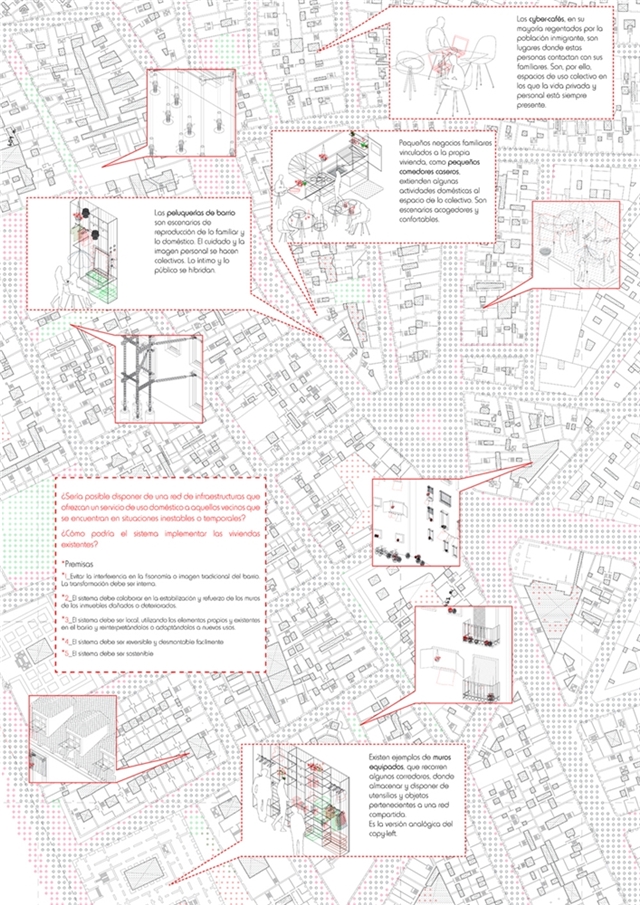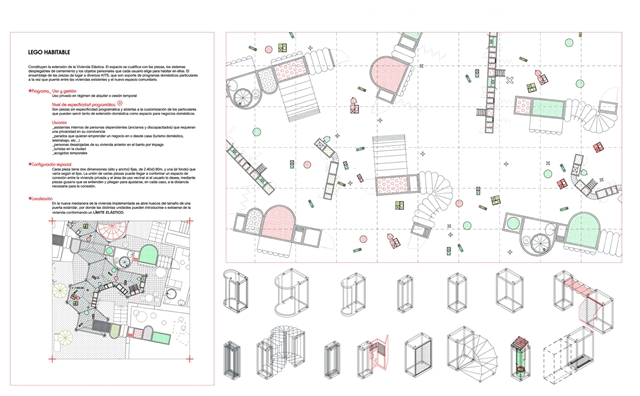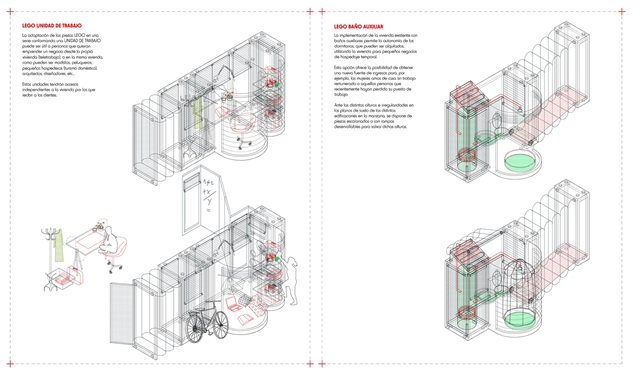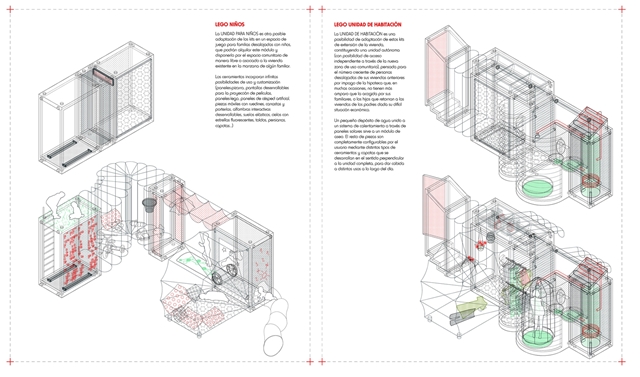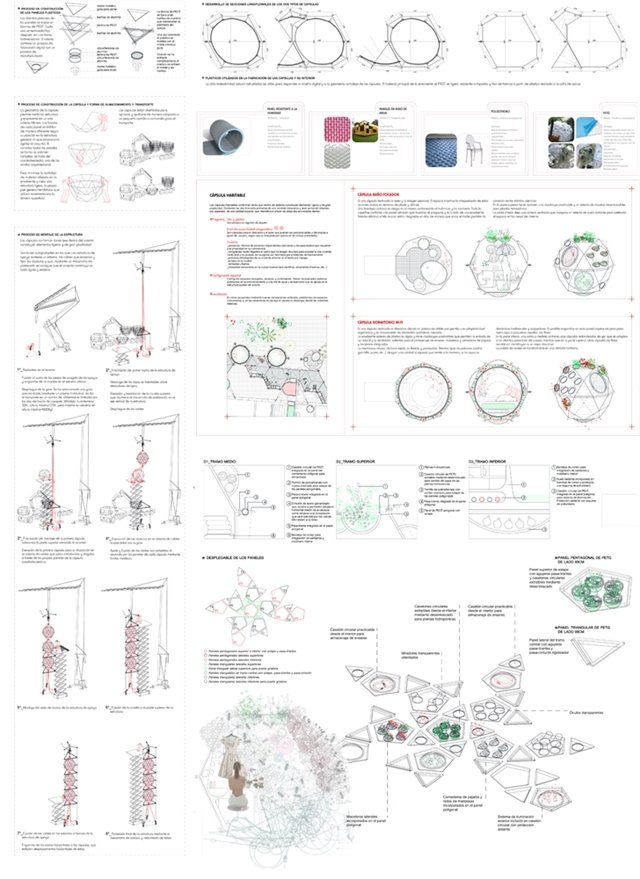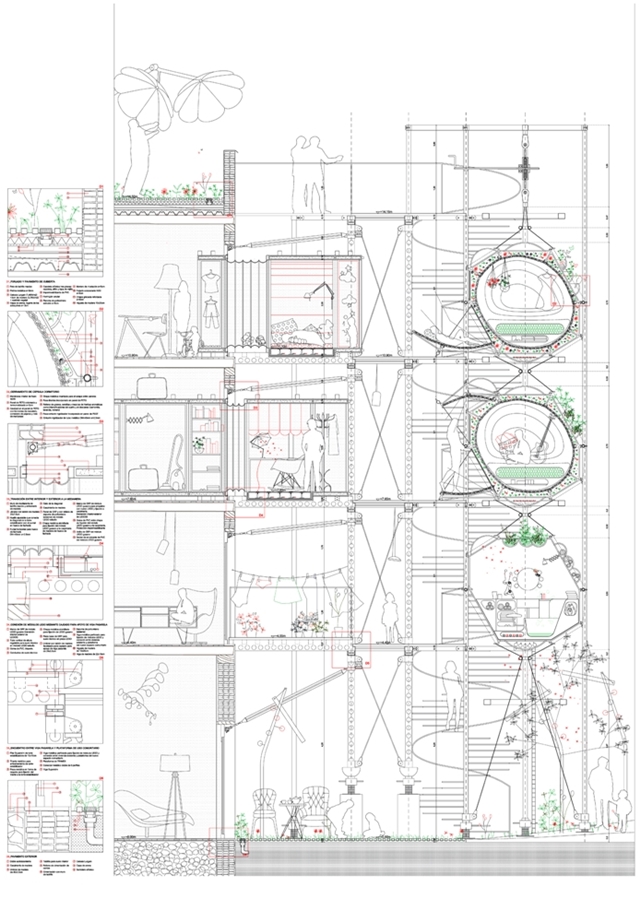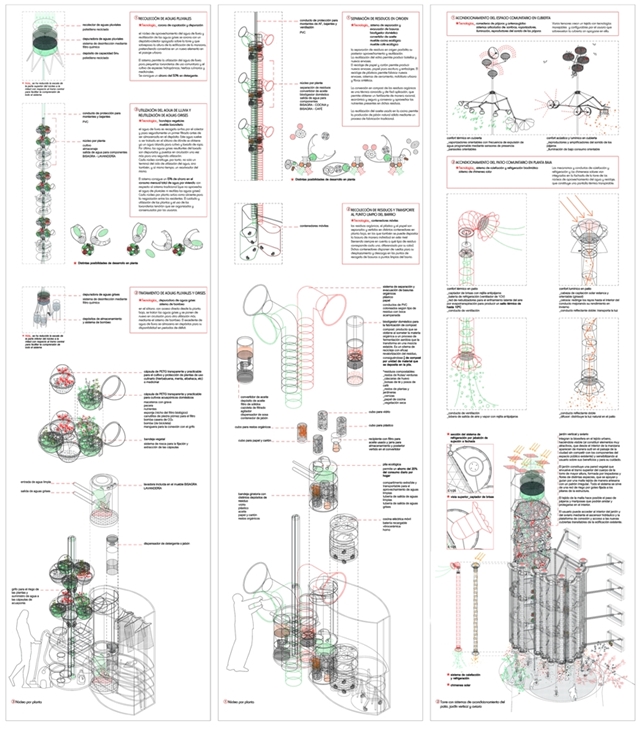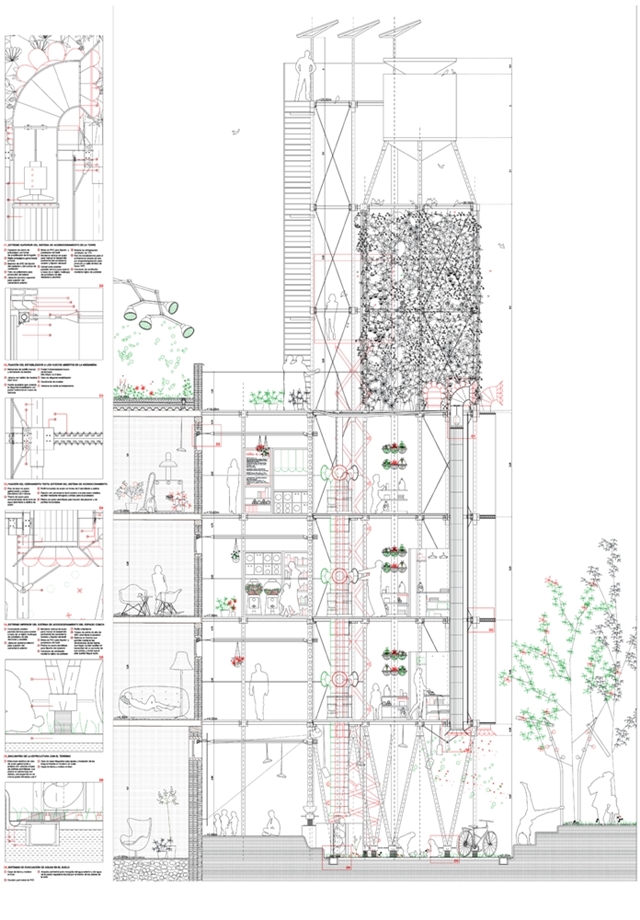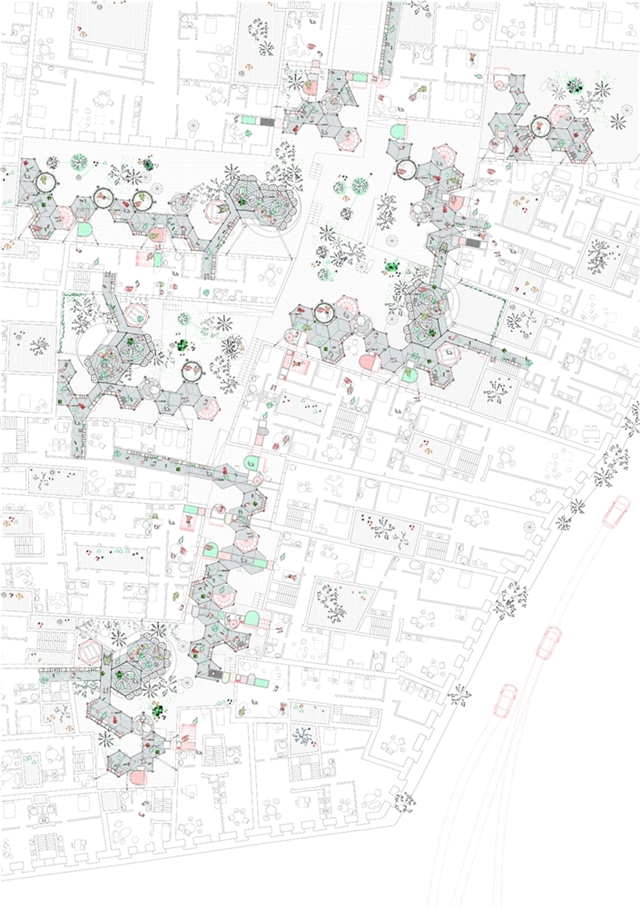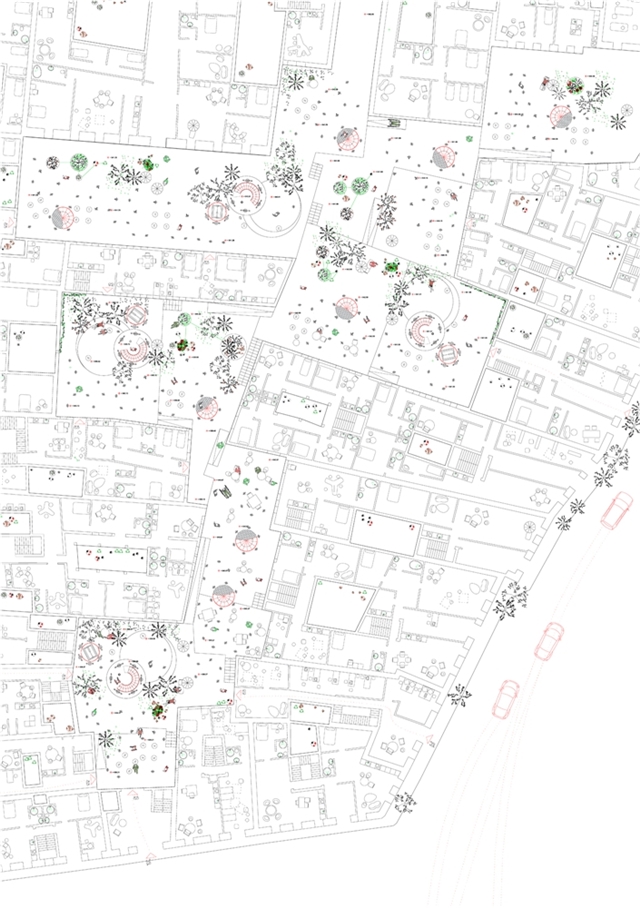Architecturally speaking, the project comprises a dual investigation between anthropology and typology of the neighborhood Lavapiés, in Madrid. It explores the use and production of domestic space from those two perspectives.
Lavapiés presents a complex situation in the social sphere as well as in the building state framework. The neighborhood gathers local population with a high percentage of old people together with immigrant population from very diverse origins. Due to this fact, it is easy to find many types of dwellers that the current housing market forgets. Some examples of these located users (addressed by the project) are: people evicted from their homes (foreclosed homes), dependents, new immigrants without resources, and temporary dwellers. The feature they share is their temporary situation.
In reference to the building sphere, the neighborhood is inserted in a development process, guided by the Integral Rehabilitation Plan of the Administration. Nevertheless, the Plan is not addressing the main issue: the existence of a 16% of substandard dwelling in the interior of the blocks that needs urgently a solution.
As a response, the project proposes an alternative; a system that challenges and regenerates the interiors of the blocks at an urban scale. The system doesn’t dismiss, but rather re-adapts the urban elements of the studied sceneario: the traditional ones (balconies, courtyards, terrace roofs…) and the new ones (scaffolding, braces…).
The system implements the temporary-use of domestic equipment so as to complete the existing housing-hardware in the neighborhood. The interior courtyards become reversible scenarios through this organic display, which creates a new realm in-between private and public. The scaffolding-structure works as a stabilizer of the party walls of the blocks and provides new accesses to the inhabitable dwellings. The adjustable components adapt and integrate the whole system in the irregular urban tissue.
These new exposed technological advancements reduce water and energy consumption of the inhabitants and equip the common open spaces. These devices fulfill special needs of the proposed domestic-common life by fostering processes of participation, negotiation, exchange and sustainability. The ultimate intention of the system is to provide a collective link within the community.
Finally, a block is chosen as unit of intervention. Just the inner substandard dwellings are demolished. The system of temporary-use domestic equipment is inserted in the block as it manifests a new domestic ecosystem.





